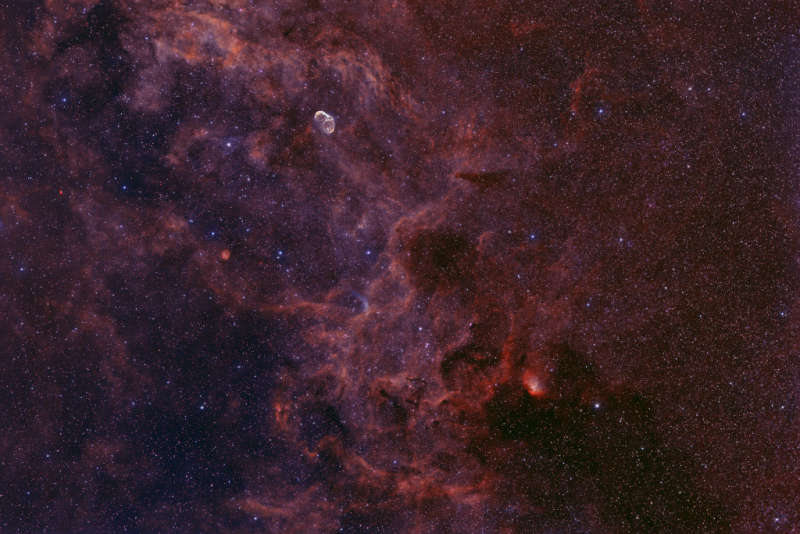Credit & Copyright: Wolfgang Zimmermann
Explanation:
These cosmic clouds of gas and dust drift
through rich star fields along the
plane of our Milky Way Galaxy toward the high flying constellation
Cygnus.
They're too faint to be seen with the unaided eye though, even on a
clear, dark night.
Image data from a
camera and telephoto lens
using narrowband filters
was used to construct this 10 degree wide field of view.
The deep mosaic reveals a region that includes
star forming dust clouds seen in silhouette against the
characteristic glow of atomic hydrogen and oxygen gas.
NGC 6888 is the standout emission nebula near the top.
Blown by winds from an massive Wolf-Rayet star it's
about 25 light-years across and known as the
Crescent Nebula.
A faint bluish curl just below center in the frame is also the
signature of a Wolf-Rayet
star.
Burning fuel at a prodigious rate and near the end of their stellar
lives, both stars will ultimately go out with a bang in a spectacular
supernova explosion.
Toward the right, a massive, young O type star powers the glow of Sh2-101, the
Tulip Nebula.
1999 2000 2001 2002 2003 2004 2005 2006 2007 2008 2009 2010 2011 2012 2013 2014 2015 2016 2017 2018 2019 2020 2021 2022 2023 2024 2025 |
Yanvar' Fevral' Mart Aprel' Mai Iyun' Iyul' Avgust Sentyabr' Oktyabr' Noyabr' Dekabr' |
NASA Web Site Statements, Warnings, and Disclaimers
NASA Official: Jay Norris. Specific rights apply.
A service of: LHEA at NASA / GSFC
& Michigan Tech. U.
|
Publikacii s klyuchevymi slovami:
Cygnus - Lebed'
Publikacii so slovami: Cygnus - Lebed' | |
Sm. takzhe:
Vse publikacii na tu zhe temu >> | |
